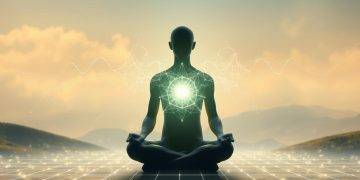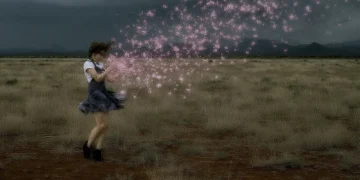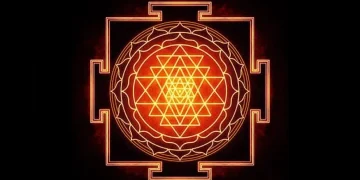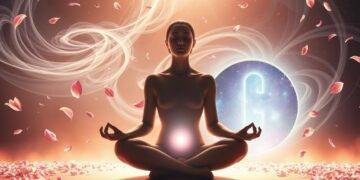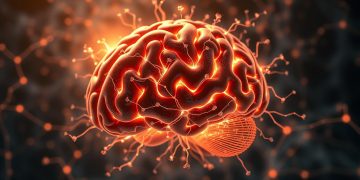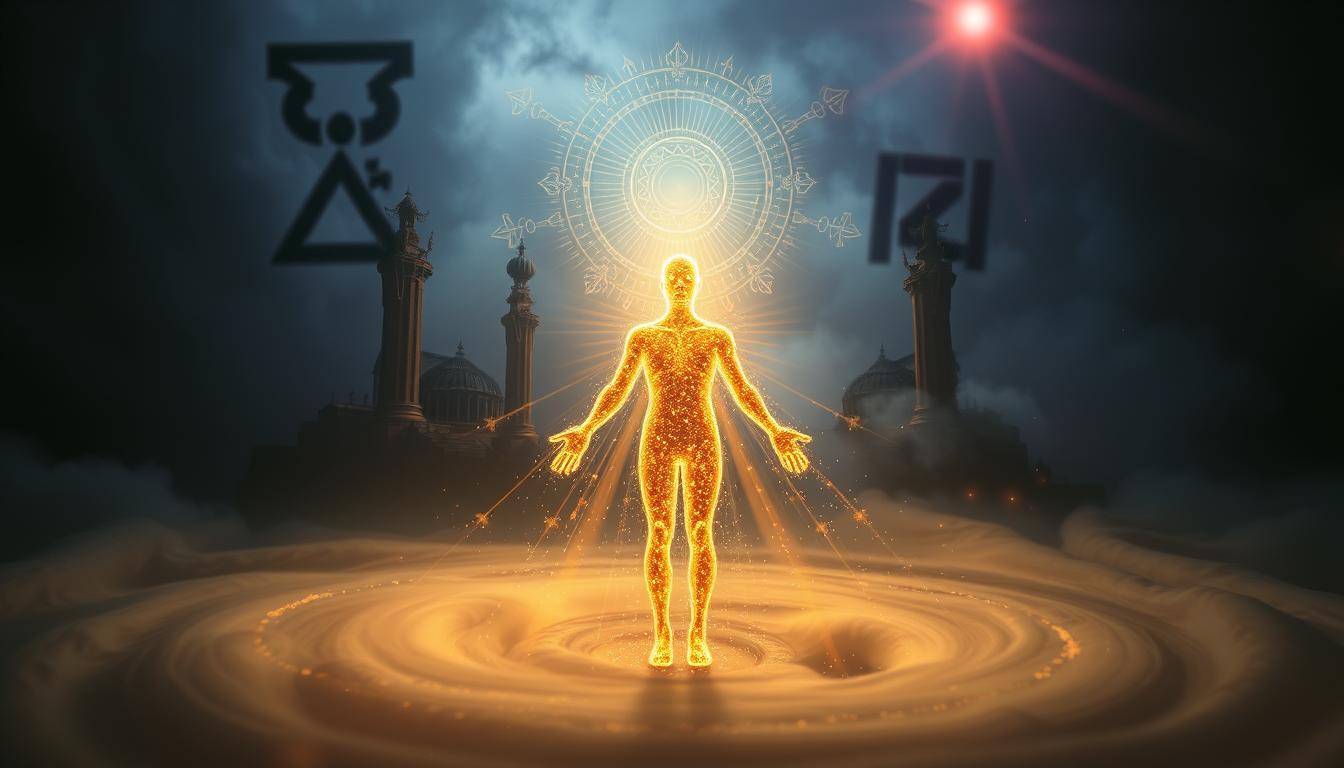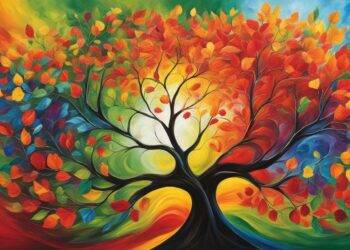“One does not become enlightened by imagining figures of light, but by making the darkness conscious,” wrote Carl Jung. This idea mirrors the journey of personal growth—a process of uncovering hidden strengths through challenges rather than chasing perfection.
Ancient alchemists sought to turn base metals into gold. Today, this symbolizes how we refine our struggles into wisdom. The phrase “turning resistance into radiance” captures this duality: facing inner obstacles to reveal your truest potential.
Historical texts describe alchemy as both science and art. Similarly, self-development blends practical steps with creative breakthroughs. Artists and philosophers—from Renaissance thinkers to modern therapists—have framed growth as a process of shedding old patterns to embrace renewal.
Your journey begins with self-awareness. Like the alchemist’s fire, this awareness burns away what no longer serves you. Each step—whether small or seismic—builds toward a stronger version of yourself. Ready to explore how?
Key Takeaways
- Alchemy serves as a metaphor for overcoming challenges to achieve personal growth.
- True transformation starts with acknowledging and working through inner resistance.
- Historical practices blend with modern psychology to create actionable self-development strategies.
- Self-awareness acts as the catalyst for lasting change.
- The journey requires patience—growth unfolds in stages, not overnight.
Understanding alchemical transformation: The Metaphor Behind the Process
Historical manuscripts reveal alchemy was never just about metallurgy—it was a coded roadmap for inner evolution. This process mirrors patterns found in tarot archetypes and Buddhist teachings, where symbolic journeys reflect our path to awakening. Like these traditions, alchemy uses physical stages to represent psychological growth—each step revealing deeper truths about the self.

What Is the Alchemical Process?
At its core, the practice involves three key stages: breaking down old patterns, refining insights, and integrating new wisdom. Medieval texts describe this as moving from “lead” (limitations) to “gold” (potential)—not through literal chemistry, but by confronting hidden fears and desires. Modern psychology echoes this through shadow work, where facing the conscious and unconscious mind sparks genuine change.
Spiritual Versus Material Transformation
While early alchemists sought riches, their deeper goal was enlightenment—a shift from external gains to internal mastery. This distinction matters today: chasing status in the world often distracts from nurturing inner clarity. True growth happens when we balance material needs with soul-level purpose, much like balancing fire (action) and water (intuition) in alchemical rituals.
Your journey through these stages isn’t linear. Some days feel like progress; others reveal new layers to heal. But each phase, whether turbulent or calm, moves you closer to wholeness—the real “gold” within.
Calcination: Burning Away Attachments and Ego
The journey of self-renewal begins with fire—a symbolic blaze that consumes what holds us back. In alchemical tradition, calcination marks the first stage, where intense heat breaks down raw materials into their essence. For modern seekers, this mirrors burning away outdated beliefs and ego-driven patterns—the “prima materia” of psychological growth.

This first stage isn’t gentle. Like a forest fire clearing deadwood, the process feels disruptive. Relationships, habits, or identities that once felt secure may crumble. Yet this burning creates space for authenticity. As occult texts describe, the prima materia represents unrefined potential—what remains after life’s illusions turn to ash.
| Stage | Symbol | Outcome |
|---|---|---|
| Calcination | Fire | Release of attachments |
| Personal Growth | Challenges | Clarity of purpose |
| Ego Dissolution | Lead to Gold | Inner resilience |
Why embrace this discomfort? Just as lead transforms under heat, facing resistance strengthens your core. The ego resists—it clings to comfort—but true growth demands surrender. Each layer shed through this burning brings you closer to your “gold”: the unshakable self beneath temporary roles.
You might feel exposed in this fire. That’s normal. Like metals purified in crucibles, you emerge lighter, ready for the next phase. The work here isn’t destruction—it’s liberation.
Dissolution: Stirring Emotional Depths
After the fires of calcination subside, a new phase emerges where water becomes the catalyst for deeper exploration. This second stage—known as dissolution—invites you to submerge the ashes of old patterns into the waters of introspection. Here, what was burned away begins to blend with emotional currents, revealing hidden truths.

Embracing the Waters of the Unconscious
In alchemical tradition, water symbolizes the unconscious mind—a reservoir of repressed feelings and forgotten memories. During dissolution, this element stirs up buried emotions, creating temporary chaos. Like a stormy sea, this phase can feel overwhelming. Yet within this turbulence lies clarity: by facing these parts of yourself, you begin to distinguish limiting beliefs from authentic needs.
| Stage Element | Symbol | Outcome |
|---|---|---|
| Emotional Release | Flowing Water | Vulnerability |
| Unconscious Exploration | Deep Ocean | Self-Awareness |
| Integration | Calm Lake | Renewed Perspective |
This journey through emotional depths isn’t about control. It’s about allowing water to cleanse and reshape your inner landscape. The more you engage with this process, the clearer your path becomes—transforming chaos into a foundation for growth.
Separation: Distinguishing the Valuable Within
Imagine holding a sieve filled with ashes—each particle representing beliefs, memories, and patterns. The separation stage asks you to sift carefully, retaining what sparks growth while letting go of what dims your light. This phase isn’t about loss—it’s about discerning the elements that align with your truest self.

Filtering Out Limiting Beliefs
Start by examining recurring thoughts that whisper “I can’t” or “I’m not enough.” These mental habits act like debris in your sieve—blocking clarity. Ask: “Does this belief expand my potential or shrink it?” For example, swapping “I’m bad at relationships” with “I’m learning healthy communication” shifts your inner narrative.
Selecting Essential Elements for Growth
Identify the parts of your identity that feel authentic. A journal exercise helps: list traits you admire in yourself and moments they shone. These are your elements worth nurturing—the core ideas that fuel purpose. Discard societal expectations that no longer fit, like prioritizing others’ approval over your values.
This separation requires patience. Some patterns cling like fine ash. But with each intentional choice, you reclaim space for growth. What will you keep in your sieve today?
Conjunction: Merging the Divided Self
The alchemical journey reaches a pivotal moment when opposites unite. This conjunction phase bridges fragmented parts of the self—like connecting puzzle pieces to reveal a complete picture. Here, inner conflicts soften as previously clashing energies find harmony.

Harmonizing Masculine and Feminine Energies
Every person carries both masculine feminine traits—action-oriented drive and intuitive receptivity. Balancing these creates resilience. For example:
- Assertiveness paired with compassion
- Logic tempered by creativity
- Ambition balanced with self-care
This integration isn’t about gender roles. It’s about cultivating wholeness by honoring all aspects of your nature.
The body soul connection deepens during this stage. Physical habits like mindful movement or breathwork become bridges between tangible and spiritual realms. You might notice synchronicities—gut feelings aligning with logical decisions—as inner divisions heal.
When conflicting parts come together, they form a cohesive identity. A perfectionist learns self-compassion. A people-pleaser discovers boundaries. These reconciliations mirror alchemy’s ultimate goal: turning fragmented experiences into unified wisdom.
Your self isn’t meant to exist in pieces. Through conjunction, you become the architect of your wholeness—designing a life where all energies collaborate rather than compete.
Fermentation: The Birth of a Renewed Self
Nature’s most profound transformations happen in darkness. Consider compost: rotting leaves become rich soil where new life takes root. This fermentation stage in personal growth works similarly—decaying old identities to nourish emerging potential.

As the final stage before rebirth, fermentation tests your resolve. What remains after earlier phases—calcination’s fires and dissolution’s waters—now breaks down further. Emotional “compost” forms, blending lessons learned with vulnerabilities exposed. Here, the soul begins its metamorphosis.
Navigating Through Spiritual Rebirth
This process isn’t passive decay. Like yeast converting sugar to energy, you actively refine your inner spirit. Challenges become nutrients:
| Stage Component | Symbol | Outcome |
|---|---|---|
| Release of Old Self | Compost | Nutrient-rich foundation |
| Inner Testing | Yeast Fermentation | Energy for growth |
| Spiritual Awakening | Seed Sprouting | Visible renewal |
Dissolution resurfaces here—not as chaos, but as purposeful release. The soul sheds layers like autumn leaves, making space for spring’s buds. Each struggle endured becomes part of your wisdom.
You might feel disoriented during this transformation. That’s the soul expanding beyond former limits. What seems like endings are actually thresholds. When fermentation completes, you’ll emerge—not just changed, but renewed.
Distillation: Refining the Essence of the Spirit
Every master craftsman knows: raw materials reveal brilliance only through relentless refinement. Distillation embodies this truth—a meticulous process where impurities dissolve, leaving behind pure essence. This stage demands both fire’s intensity and disciplined order, mirroring how personal growth requires heat to burn away distractions and structure to shape lasting change.

Purification Through Fire and Reflection
The fire here serves dual roles. First, it vaporizes residual matter—self-doubt, outdated narratives, and half-hearted commitments. Second, its heat sparks introspection: “What patterns dilute my potential?” Ancient texts used symbols like coiled serpents to represent this cyclical process of destruction and renewal.
| Stage | Symbol | Outcome |
|---|---|---|
| Heating | Flaming Crucible | Release of mental clutter |
| Condensing | Cooling Flask | Crystallized self-awareness |
| Collecting | Golden Chalice | Clarity of purpose |
This order isn’t rigid—it’s a rhythm. Like distilling water, you alternate between boiling intensity and cooling reflection. Each cycle removes more impurities, revealing your inner gold: the unshakable truths guiding enlightened choices.
Modern practitioners use symbols as anchors. A vision board might represent goals, while journaling tracks progress. These tools create order amid chaos, helping you separate fleeting emotions from core values. What matter will you release today to uncover your radiant essence?
Coagulation: Solidifying Enlightenment into Gold
The alchemist’s quest culminates when essence becomes form—when years of refinement crystallize into lasting wisdom. This final stage, called coagulation, turns inner clarity into tangible results. Like molten gold cooling into shape, your efforts now solidify into enduring strength.

During this stage, purified insights merge into a cohesive whole. Opposing forces—logic and intuition, action and rest—unite seamlessly. The philosopher’s stone emerges not as a physical object, but as an unshakable sense of self. Ancient texts describe this as “the marriage of sun and moon,” where fragmented lessons become actionable truth.
| Stage Component | Symbol | Outcome |
|---|---|---|
| Essence Solidification | Hardened Gold | Stable Identity |
| Opposite Synthesis | Sun-Moon Union | Inner Harmony |
| Lingering Matter | Reshaped Clay | Renewed Purpose |
This period reconfigures lingering matter—old doubts or fears—into fuel for growth. What once felt chaotic now serves your vision. A musician, for example, might blend technical skill with emotional depth to create soul-stirring art.
Coagulation isn’t an endpoint. It’s a foundation. The gold you’ve forged becomes a compass for future journeys. As one medieval manuscript notes: “The stone is both completion and genesis—a beacon for those who dare to begin again.”
Practical Steps for Embracing Your Alchemical Journey
True growth lives at the intersection of timeless wisdom and modern action. By blending ancient principles with daily habits, you create a process that transforms challenges into stepping stones. This approach turns abstract concepts into tangible results—the real “gold” of personal development.

Daily Rituals to Support Transformation
Morning sets the tone. Try a 5-minute reflection practice:
- Light a candle to symbolize focus (modern symbols anchor intention)
- Write three intentions aligned with your journey
- End with deep breaths to ground energy
Evenings become integration time. Spiritual alchemy practitioners recommend journaling answers to: “What resisted me today?” and “What revealed my strength?” This builds awareness of your unique development path.
Integrating Ancient Wisdom Into Modern Life
Ancient methods thrive when adapted. Consider this comparison:
| Ancient Practice | Modern Adaptation | Outcome |
|---|---|---|
| Elemental rituals | Nature walks with intention | Grounding |
| Shadow work | Therapy sessions | Self-awareness |
| Sacred geometry | Vision board creation | Clarity |
Ancient rituals become powerful when paired with today’s tools. A busy parent might use breathwork during school runs. An executive could practice mindfulness between meetings. Your life becomes the laboratory where wisdom meets action.
Every small ritual feeds the larger process. Like alchemists tending their fires, consistency matters more than perfection. What daily spark will you nurture today?
Alchemical Transformation in Modern Culture and Self Development
Alchemy’s fingerprints appear in unexpected places—from abstract paintings to corporate boardrooms. Its symbolic language shapes how we frame growth, blending medieval wisdom with 21st-century challenges. This process isn’t confined to history—it thrives in therapy offices, art studios, and daily mindfulness routines.
Influence on Art, Psychology, and Spirituality
Carl Jung saw alchemy as a map of the soul. He linked its stages to individuation—the journey toward psychological wholeness. Artists like Frida Kahlo used alchemical elements (fire, water) to depict emotional rebirth. Even Paracelsus’s “as above, so below” philosophy resurfaces in holistic health practices.
- Modern therapy integrates shadow work—a nod to alchemy’s “black stage” of confronting darkness
- Mindfulness apps use elemental symbols (earth for grounding, air for clarity)
- Corporate retreats adopt three stages frameworks for team-building
Bridging Ancient Symbols and Contemporary Life
The philosopher’s stone now symbolizes breakthroughs in science or personal growth. Alchemy’s lead-to-gold metaphor inspires career pivots and creative projects. Modern alchemists repurpose these terms—viewing setbacks as “prima materia” for reinvention.
| Ancient Symbol | Modern Equivalent | Purpose |
|---|---|---|
| Black Stage | Career Transition | Embracing uncertainty |
| Three Stages | Project Management | Structured innovation |
| Body-Soul Union | Mind-Body Fitness | Holistic wellness |
This fusion of old and new turns abstract ideas into tools. A teacher might use dissolution techniques to manage stress. An entrepreneur could frame product launches as conjunction phases. Alchemy’s world lives on—not in labs, but in lives daring to transform.
Conclusion
Personal evolution mirrors alchemy’s timeless dance—processes that demand patience yet yield profound shifts. From calcination’s fiery trials to coagulation’s golden clarity, each stage serves as a stepping stone. Resistance becomes fuel, and vulnerability turns to strength when met with courage.
The soul thrives through this journey. Like metals tested in flames, your core self gains resilience. Merging opposites—logic with intuition, action with stillness—creates harmony. Ancient alchemy teaches that true growth lies not in skipping steps but embracing their wisdom.
Apply these lessons daily. Journal reflections, mindful breathing, or nature walks become modern crucibles for change. Progress isn’t linear—it spirals, revisiting lessons with deeper understanding. Every challenge polished today shines brighter tomorrow.
Your path reflects alchemy’s promise: within struggle lies potential. As you sift through life’s ashes, remember—the gold you seek already glimmers within. Keep refining.
FAQ
How does coagulation differ from earlier stages like dissolution?
Coagulation represents the final synthesis—solidifying insights gained through earlier phases like dissolution (emotional exploration) and distillation (refinement). It’s where fragmented lessons crystallize into actionable wisdom, unlike dissolution’s focus on breaking down old patterns.
Can the philosopher’s stone concept apply to modern self-development?
Absolutely. The philosopher’s stone symbolizes creating lasting value from raw experiences—turning personal “lead” (challenges) into “gold” (resilience). Modern practices like mindfulness or shadow work mirror this idea of refining one’s inner world for tangible growth.
Why is balancing masculine/feminine energies emphasized in conjunction?
Conjunction bridges logic (masculine) and intuition (feminine), fostering holistic decision-making. Carl Jung’s anima/animus theory parallels this—integrating these energies prevents over-reliance on one mindset, enabling balanced creativity and problem-solving.
How does fermentation relate to psychological rebirth?
Fermentation mirrors the “dark night of the soul”—a period where old identities dissolve before new ones form. Like a caterpillar’s metamorphosis, this stage requires surrendering control to allow organic growth, often leading to breakthroughs in self-awareness.
What daily rituals support alchemical transformation?
Journaling for self-reflection (separation), meditation to access unconscious wisdom (dissolution), and goal-setting to solidify intentions (coagulation) are practical tools. These rituals create structure while allowing space for spontaneous insights.
How do alchemical symbols appear in modern psychology?
Jungian psychology uses symbols like the ouroboros (cycle of renewal) and rubedo (final awakening) to describe individuation. Modern therapies often unknowingly echo alchemical processes—cognitive restructuring mirrors calcination’s ego-burning phase.
Can someone skip stages like calcination or separation?
Stages often overlap, but bypassing core phases risks superficial growth. For example, avoiding calcination (confronting ego) might lead to inflated self-image, while skipping separation (critical evaluation) could trap someone in outdated beliefs.
Why is lead-to-gold symbolism still relevant today?
Lead represents unrefined potential—fears, traumas, or untapped skills. The “gold” isn’t perfection but authentic self-expression. This metaphor encourages viewing obstacles as raw materials for building resilience and purpose.
